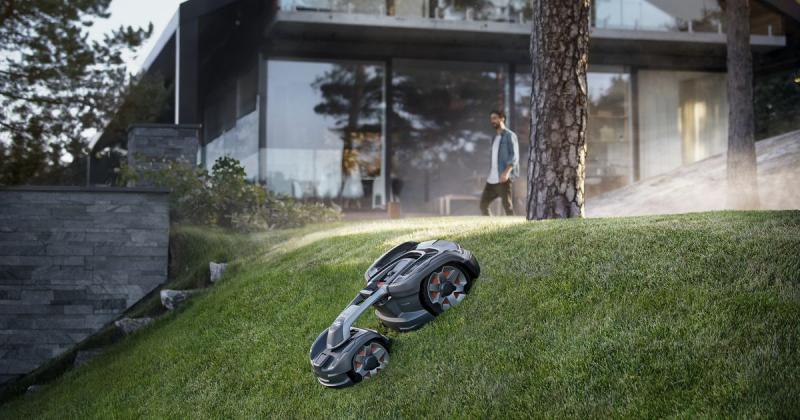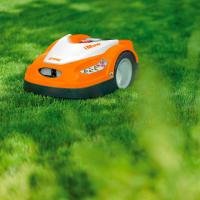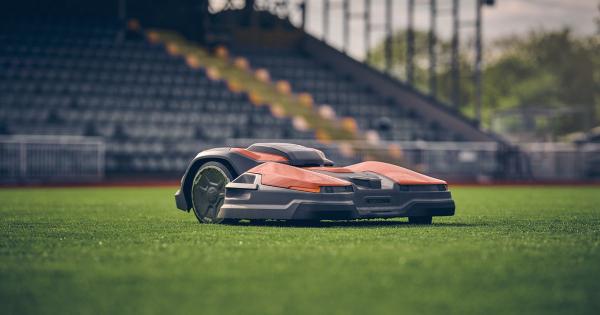How Do Robotic Lawn Mowers Work?
1st Feb 2022
Robotic lawn mowers are becoming increasingly popular, as they offer a convenient and efficient way to keep your lawn looking its best. But how do they actually work?
In this article, we will take a look at the history and the inner workings of robotic lawn mowers and explain how they are able to mow your lawn without any input from you.
The history of robotic mowers
Surprisingly, advancements in robotics have been enabling mowers for 3 decades. Even though robotics are traditionally thought of as something to be developed for military or automotive use, gardening was actually an early pickup by forward-thinking manufacturers in the lawncare industry. The Husqvarna Automower, the first robotic mower powered entirely by solar energy, was introduced in 1995. By 2004, second-generation models of these mowers were able to cut a large area by following a boundary or guide wire, as well as locate their charging stations using radio transponders and return to charge when they were finished.
Since the mid-2000's, lots of other manufacturers have joined the party and are there is now a huge range of robotic mowers to choose from. From Stihl iMow & Honda Miimo to modern iterations from Stiga, Gardena, Segway and more, there is sure to be a solution for your garden.



How does a robot mower work?
A straightforward mapping system is used by robotic mowers. The user, or installer, can lay a boundary wire along the edge of the area they want to cut, that can be adapted to cover obstructions in the centre of the lawn. The robot changes course randomly to avoid the wire when it senses it is headed in that direction. This prevents the robot from repeatedly crossing the wire and leaving unattractive track marks in the lawn. Some machines are GPS enabled, allowing mapping to be created on an app using system like Google Earth. This allows for modular adaptions to the mowing area at any time, providing there is clear line of site to the satellites from your garden.
For more information of the differences between cabled or GPS machines, please click here
Advanced models contain 360-degree laser or radar sensors to detect impending dangers or obstructions in their path. This technique, together with an embedded automatic shutdowns and/or alarm features if the mower strikes someone, makes these machines safer even if nearly no robot mower design is large enough to hurt a human or animal they run into (apart from potential mild bruising when the puzzled machine rubs softly against your ankles). Even more affordable models have a collision sensor in their front bumper that, if it detects a collision, turns the vehicle around.
Robotic lawn mowers typically only remove 2-3mm of grass per pass, depending on the settings. The lawn will be fertilised by the short, unnoticeable clippings left behind and moss will be reduced by using this delicate method of cutting the grass.
Where does the robot mower cut?
A random-mow mechanism is used by most robot mowers. They'll travel straight until they run into the edge of the cutting area, or an obstacle, then turn around and travel in a new direction until they've covered the entire lawn. When their batteries run out, they'll then go back to their charging station. Robotic lawn mowers don't typically mow the entire lawn in one session since they continuously cut the grass until it is a manageable length.
Some models have more planned systems that combine random-walk systems with a more organised grid-mow pattern to leave your lawn nicely edged while still enabling the mower to manoeuvre around all the barriers and get to all the corners of the mowable area. Some even include GPS systems that may be used to programme particular routes and motion patterns. While most other automowers feature at the very least on-board control panels, Husqvarna's Automower for example has an app that allows you to monitor the mower and set cutting times.
Why would I choose a robotic mower over a traditional lawnmower?
The main benefit of a robot lawnmower is convenience. They're made to complete your mowing swiftly and effectively, and are capable of self-recharging. All modern electric robotic mowers are battery-powered and propelled by electric motors, making them quiet and less obtrusive. They are also getting fairly adept at cutting through long grass, obstacles, and irregularly shaped lawns. Innovations including terrain mapping to create more power when the mower climbs steep slopes, rotating blades that bounce rather than cut when the mower travels over a solid object, and more durable designs to better handle long grass. They can also cover larger areas than ever, with the fully professional Husqvarna Ceora able to tackle up to 75,000m².

The Husqvarna Ceora - The largest available robotic mower.
With PIN codes and alarm systems that go off if the mower is tampered with without the PIN, modern mowers are also secured against theft. Even a geo-fence is included in certain more advanced versions (Husqvarna in particular, while other brands also offer the feature). If the mower is taken outside of a predetermined GPS area, the sirens will sound continuously, it will lock itself down, and it will send tracking information back to the app so you can find it.
For more answers on robotic mowers, click here to read our FAQs section about robotic mowers.
If you want a consultation from one of our team regarding your requirements for a robotic lawn mower, please click here and fill out the form, one of the team will be in touch.
If you know what you are after, CLICK HERE TO SHOP OUR FULL RANGE OF ROBOTIC LAWN MOWERS.